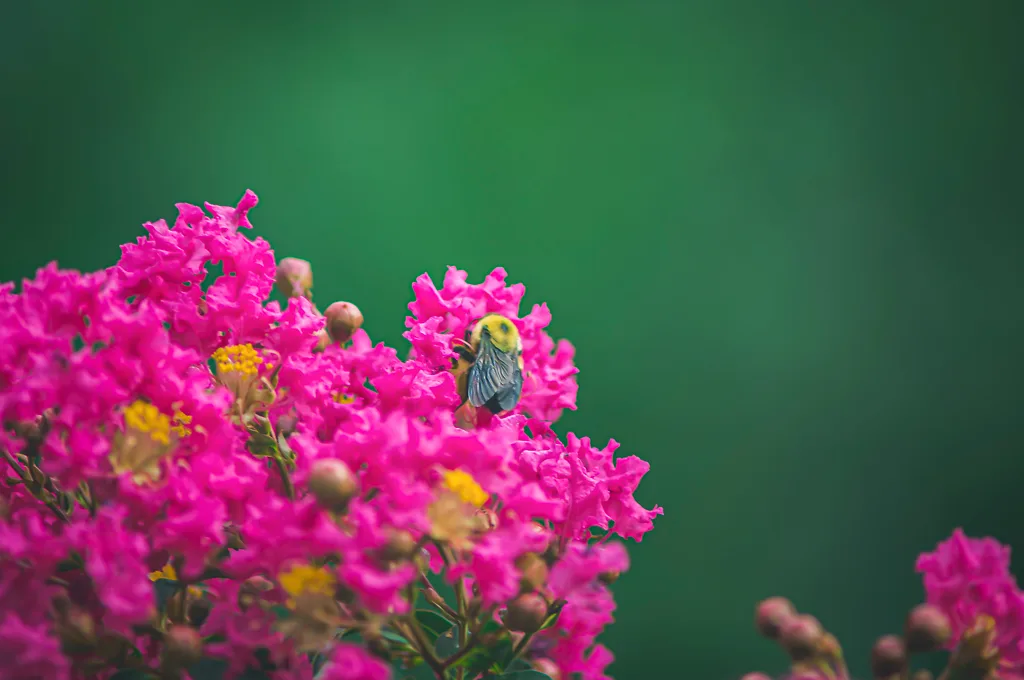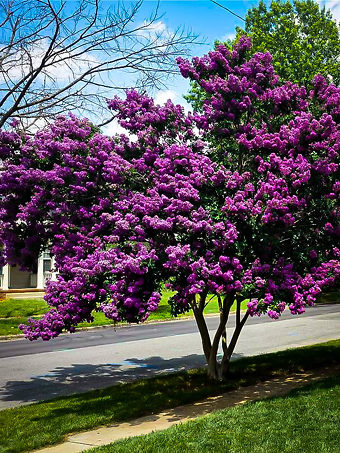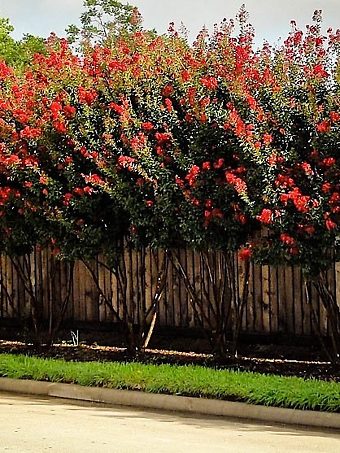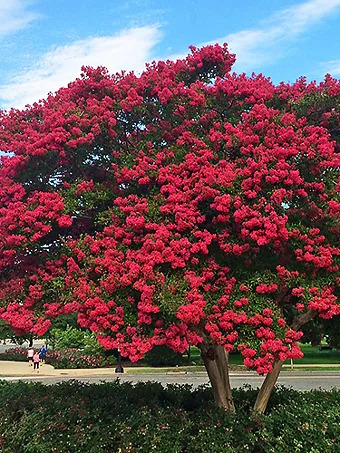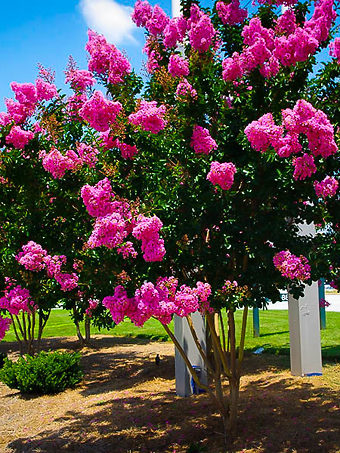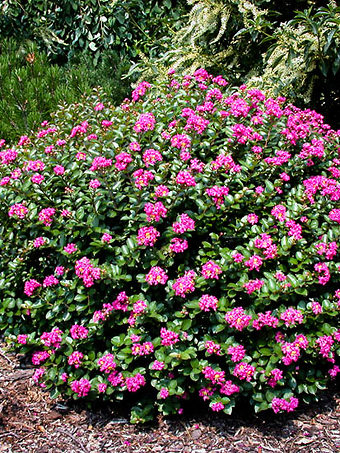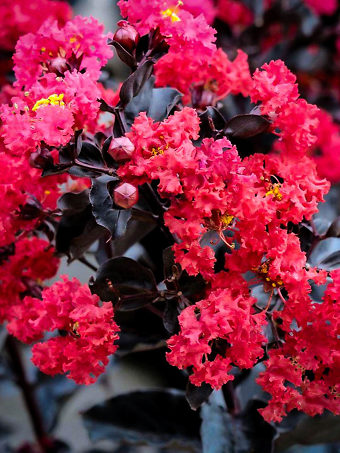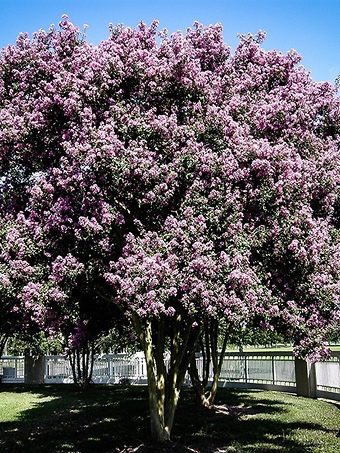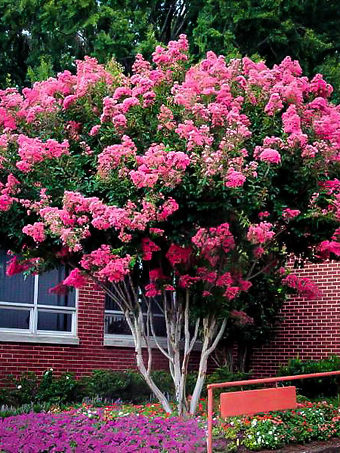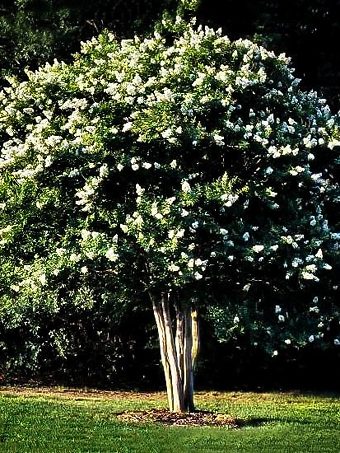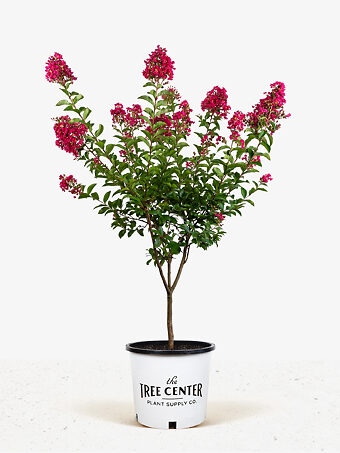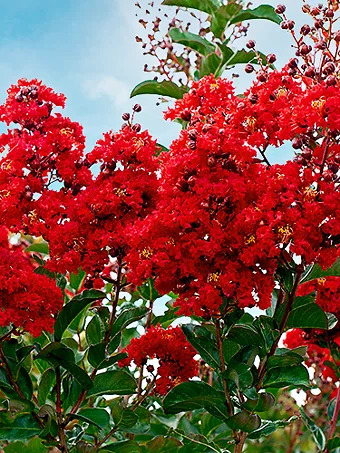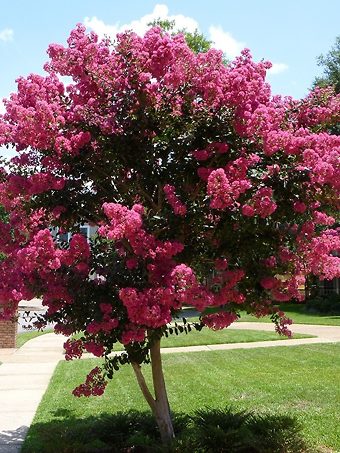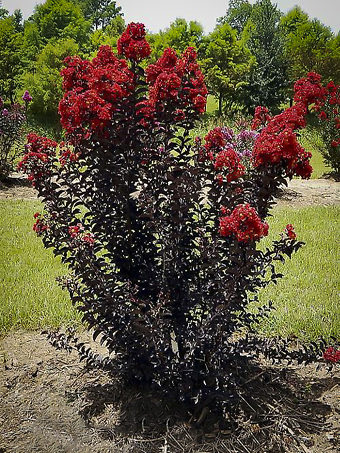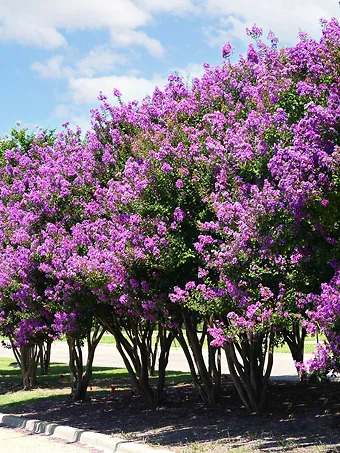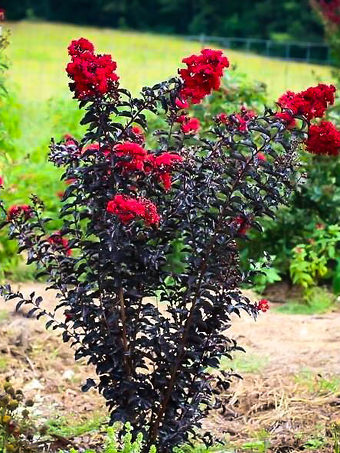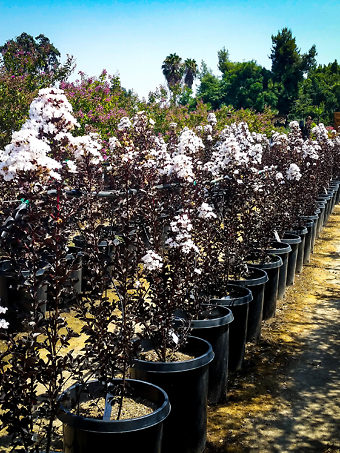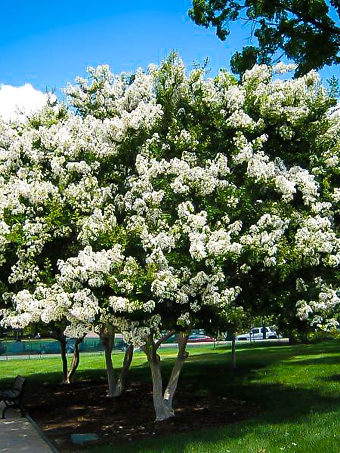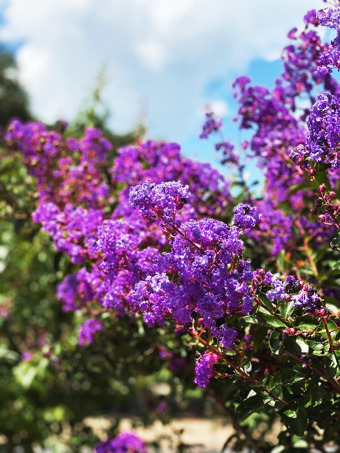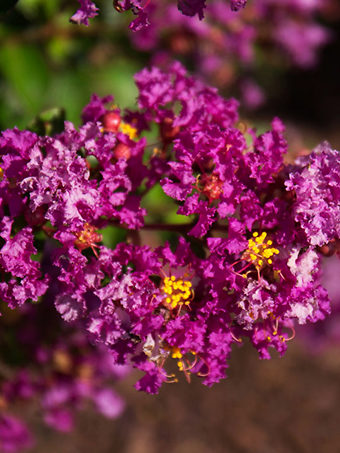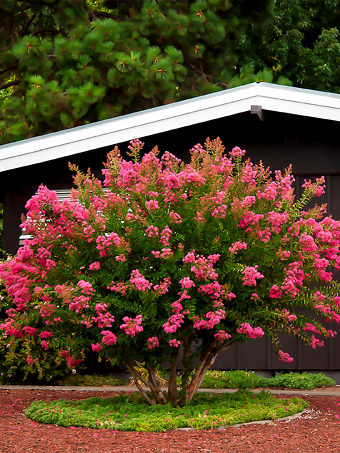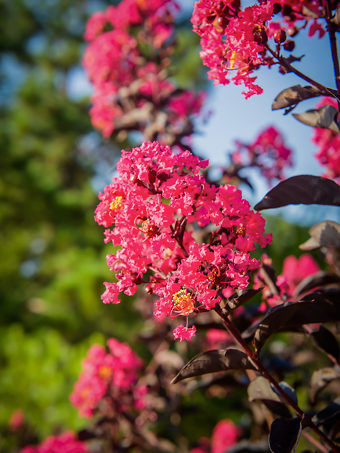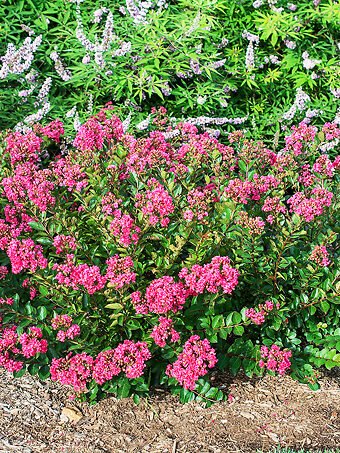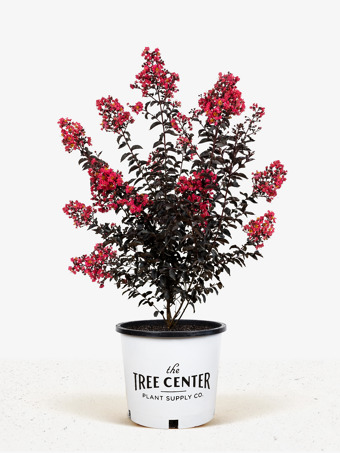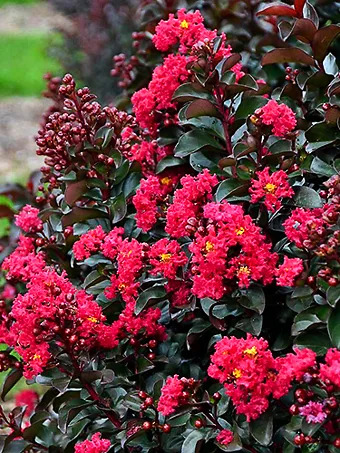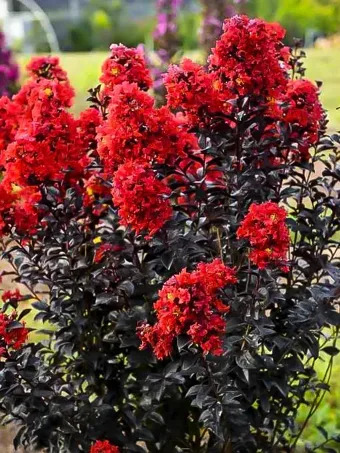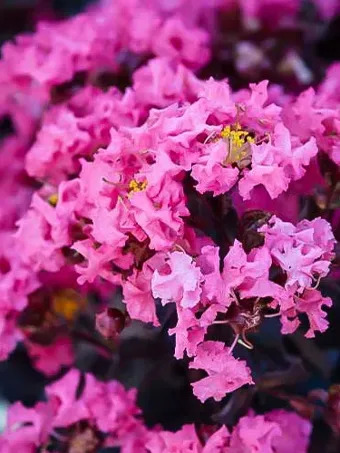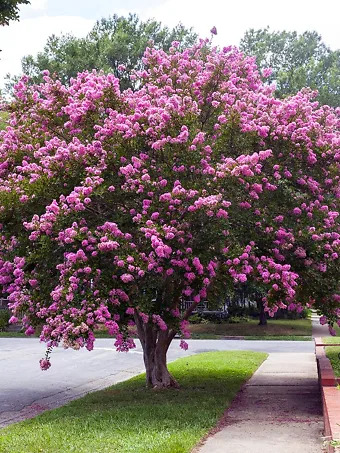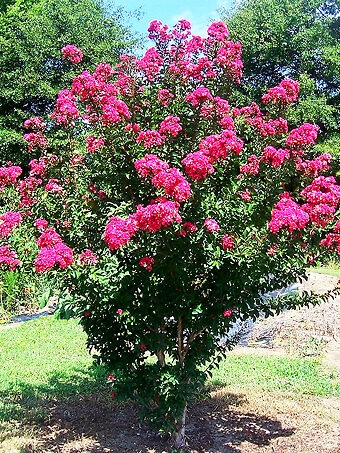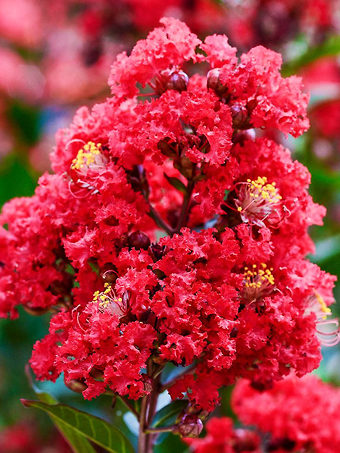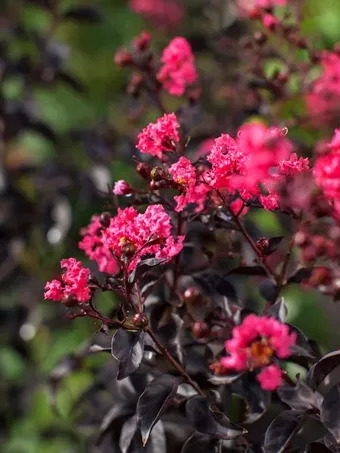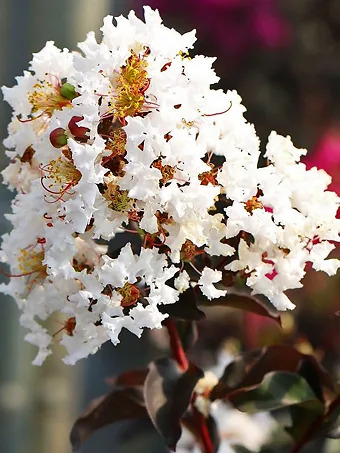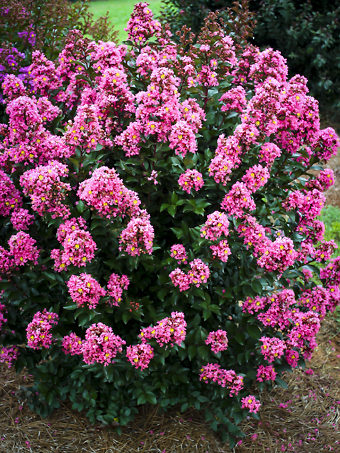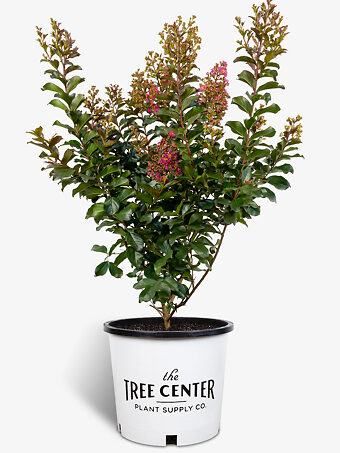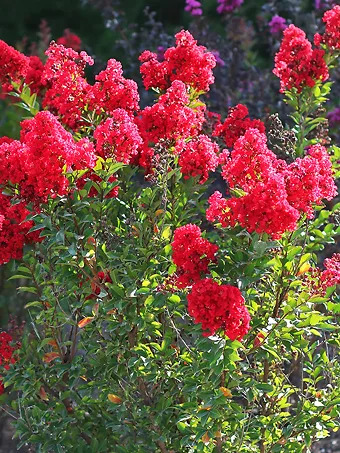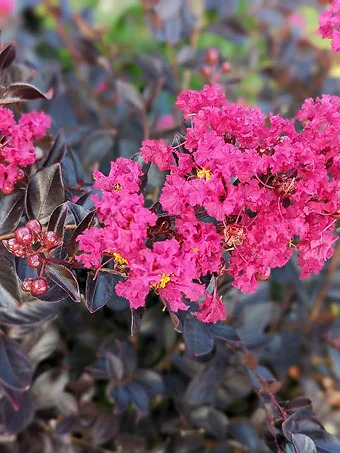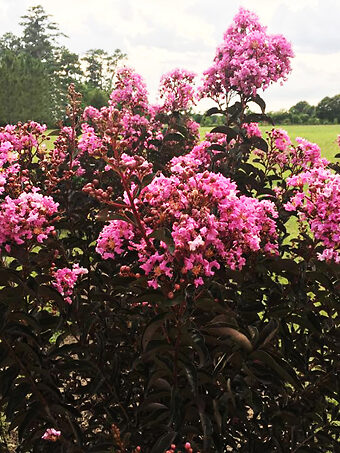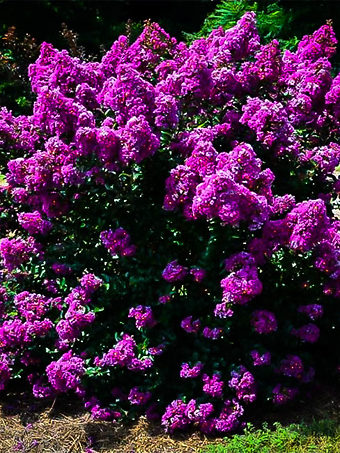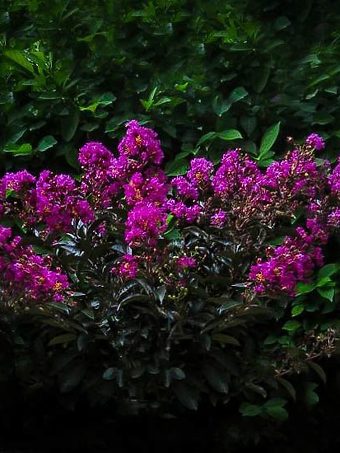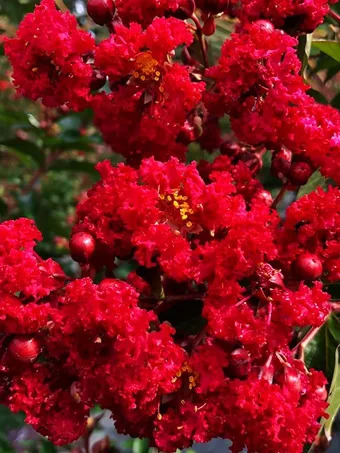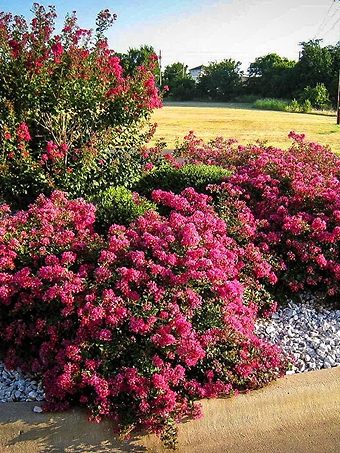Crape Myrtles
Crape myrtles, also known as crepe myrtles, are colorful landscaping trees that have become popular amongst homeowners looking for a low-maintenance solution to brightening their gardens. Available with red, purple, white, and soft or bright pink flowers, this flowering tree has an extended bloom time, meaning it can be enjoyed for the majority of the summer depending on the climate.
Crepe myrtle trees grow quickly (up to 5 feet per year) and are typically hardy to drought and frost, posing few problems to those who have them. They can be enjoyed as shrubs or small trees in gardens where space is limited, but also make for eye-catching centerpieces once they reach their full height. As deciduous trees, crape myrtles do lose both their flowers and leaves during the winter, but their attractive bark and beautiful fall colors allow them to look appealing all year round.
There are many different varieties of crape myrtles, such as Japanese crepe myrtle and Pink Velour. Each type of tree has varying characteristics, from their summer flower color to their height, offering plenty of choice to gardeners.
Put simply, crape myrtles are a versatile addition to any landscape, bringing color and life to green spaces without needing a complicated care regime.
How to Plant Crape Myrtles
It’s possible to plant a crape myrtle at any time of year if you live in a mild climate, but in particularly cold or tropical climates, it’s best to avoid planting your trees during seasons with extremely low or high temperatures.
To get the best out of your crape myrtles, they should be planted in an area that receives full sun if possible. Partial sun is also acceptable, but try to avoid particularly shaded areas as your tree may not grow as expected and may also fail to bloom. Crape myrtles planted in the shade are also prone to powdery mildew, which shouldn’t cause too many problems but can be unsightly. When it comes to soil, crepe myrtle trees benefit from well drained soil, but can be planted in most types without any negative effects.
Plant your crape myrtle bush away from larger trees that may block sunlight and instead pair them with smaller shrubs and plants, or have them as stand-alone features. Once you’ve identified a location, you’ll need to dig a hole that’s large enough to plant the tree’s root ball in (about two or three times as big). The hole you dig shouldn’t be too deep, so make sure that they’re around the same depth as the container your tree comes in. After positioning the root ball, fill in the hole with soil and water your new tree thoroughly.
Caring for Your Crape Myrtle Trees
Despite their striking appearance, Crape myrtles are one of the easier flowering trees to care for. Their showy summer flowers and elegantly arched branches will bring life to your garden without any need for excessive pruning and fertilizing. However, to make sure your trees are in optimal condition for years to come, you should aim to follow the correct care instructions. Caring for your crape myrtle properly will not only maximize its growth, but also ensures your tree blooms as expected and is resistant to disease.
Watering
In the first year after planting your crepe myrtle, it will need watering once a week (every 5-7 days). However, if it has been raining (at least an inch of water) you shouldn’t need to water your tree as well. Don’t worry if you do forget to water your tree occasionally, even in hotter weather, as crape myrtles are drought-tolerant and are able to withstand dry spells. Extended droughts may affect the tree’s ability to bloom, but your crape myrtle should survive if normal watering is resumed following this period.
Because crepe myrtles are forgiving when it comes to under-watering, it can be best to pay attention to your tree to know when it needs water. Signs like crispy or withered leaves mean that your tree is in need of watering, but this may also be resolved by heavy rainfall, so always keep an eye on the weather forecast as well.
Fertilizing
Fertilizer isn’t an essential part of caring for a crepe myrtle, but it can help to compensate for poor soil. If you know the soil in your garden is less than ideal, fertilizer could help to combat some of the missing nutrients and ensure your tree grows and blooms as expected. You can also consider mulching, which also helps your tree to retain more water, making it a popular practice for those in hot, dry climates.
If you do decide to fertilize your crape myrtle, choose a slow-release fertilizer with a good balance of nutrients. This means that nitrogen, potassium, and phosphorus will all be in equal quantities – you may find this type of fertilizer marked with numbers such as 10-10-10, or 20-20-20.
In most cases, you won’t need to fertilize, but some gardeners like to while their tree is still young and growing. Consider adding about 2 inches of fertilizer for a three-foot radius around your newly planted crape myrtle to help it settle.
Pruning
You don’t need to prune crepe myrtle trees very often, but some gardeners choose to prune more heavily in order to keep their trees small or achieve a specific shape. It’s best to undertake any significant pruning later in the winter, not during the growing season or at a time when branches are obscured by leaves.
Generally, it’s a good idea to prune your tree’s broken or dead branches as they appear, but other than that pruning will depend on your personal needs. You may also want to prune some branches if your crepe myrtle hasn’t had as much new growth or flowers as expected. Trimming some branches in the winter can encourage new ones to grow in the spring.
If you’re looking to prune your Crepe myrtle into a tree form, remove lower branches over time. Once your tree is at the right height, simply maintain its overall shape with occasional pruning. Try to avoid over-pruning and make sure any changes happen gradually or are implemented with a clear vision behind them. Pruning the wrong branches can affect the way your tree looks for years to come and can be difficult to fix.
FAQs
How fast do crape myrtles grow? A crepe myrtle tree grows quickly and can increase in height by around 5 feet each year and can grow up to 25 feet tall. This means that your tree can achieve its full height in just a few years, even if you buy a smaller shrub.
How do you prune a crape myrtle? Crape myrtles don’t need pruning very often, particularly if your intention is to allow them to grow to their full height. However, most crepe myrtle trees will benefit from having small branches trimmed away to encourage new growth as well as maintain your tree’s desired shape. You can use pruners on smaller branches, while a saw or loppers will be easier to use on large branches.
When to plant a crape myrtle? If you live in a mild climate, you can plant your crepe myrtle at any time of year, but keep in mind it may not be advisable to plant when there is frost or snow. Planting in early spring or late fall is usually a safe bet for most crape myrtles. Those living in very cold climates should avoid planting in the winter altogether, while those in tropical locations should steer clear of planting during the summer when temperatures will be very high.
How big do crape myrtles get? The height of crape myrtles can vary, with many types growing up to 25 feet, while dwarf varieties may not exceed 4 feet. You can also control the height of your crape myrtle with regular pruning if you wish your tree to remain as more of a shrub. Most crepe myrtles can be trimmed and pruned into smaller trees, so buying a dwarf variety is not essential if you have limited space.
When do crape myrtles bloom? Crape myrtle trees can bloom at slightly different times depending on the climate they’re in. However, most will have flowers all summer long, meaning that you can expect your tree to begin blooming in around June or July. Warmer climates may even see flowers appearing as early as May.
Are crape myrtles deer-resistant? Deer typically don’t like to eat crepe myrtles, making them a suitable choice for homeowners in areas where deer can be a problem. If your trees are planted at the perimeter of your garden, you could also use deer repellent to deter deer.
